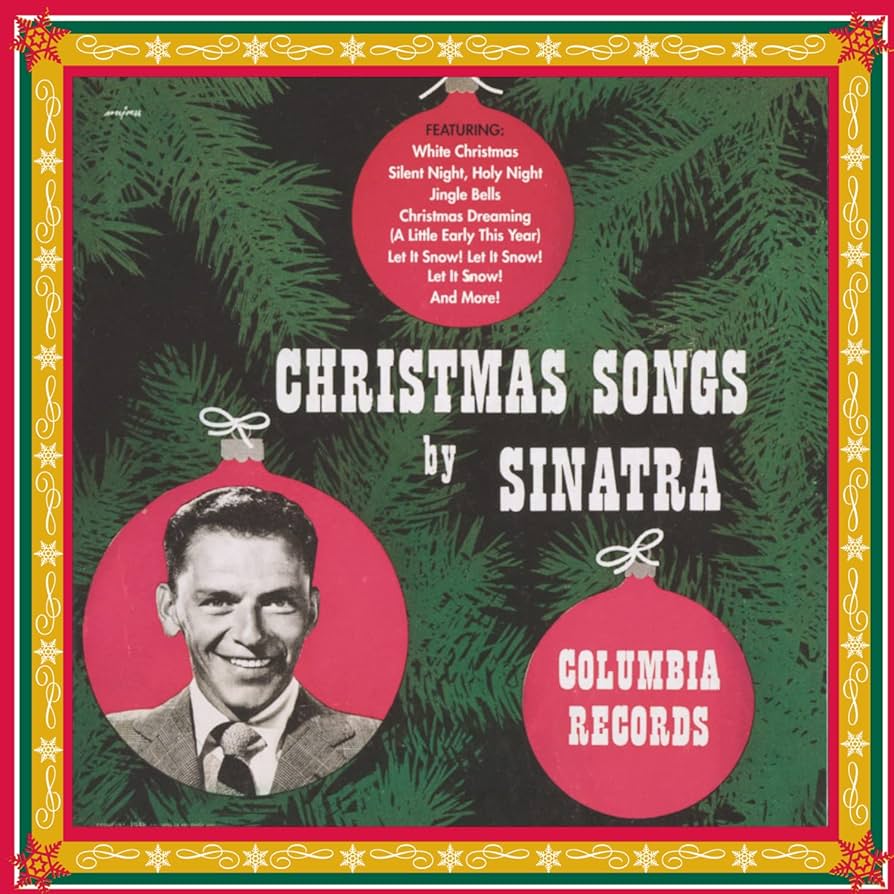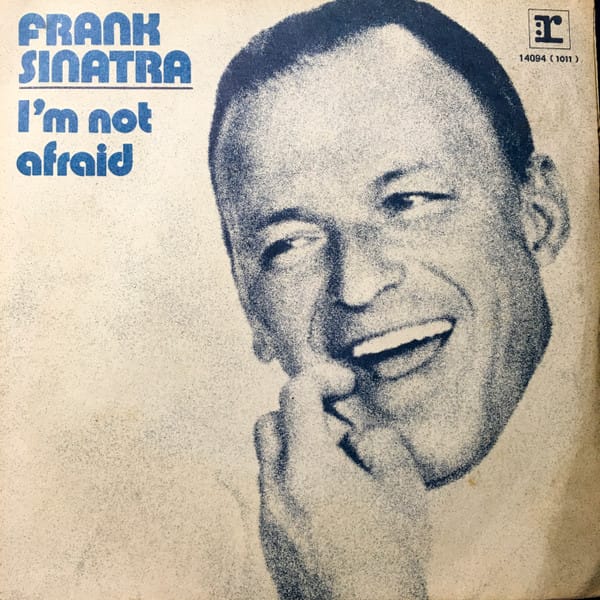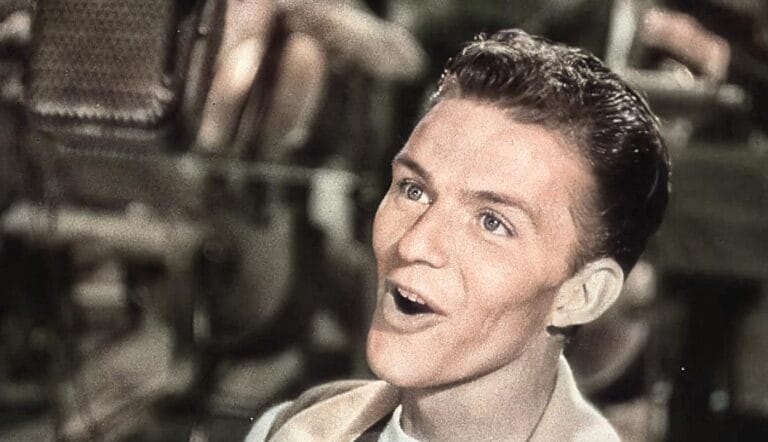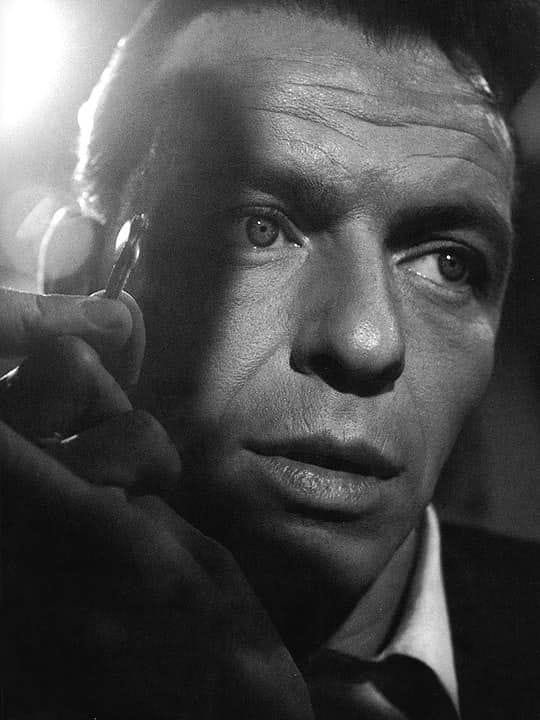
“CHRISTMAS SONGS BY SINATRA” (1948)
By Mahnuel Muñoz
BACKGROUND
Christmas has always inspired the composition of musical pieces of different styles. Before the 20th century, the songs were of a traditional religious nature, but starting in the 1930s, largely thanks to advertising, the festival acquired a commercial character that gradually displaced its original nature. Music, consequently, reflected this change, and a large number of secular Christmas melodies were created, with varied themes, some focused on children, ballads that praised romantic love or family gatherings, among many other arguments.
Although records of Christmas songs have existed since the origins of sound recording, it seems that the first records by renowned artists could belong to Enrico Caruso and Ernestine Schumann-Heink, with songs such as “Cantique De Noël” (1916) and “Stille Nacht ,Heilige Night” (1912). In popular music, the pioneer was Bing Crosby, who in 1928 wrote some Christmas carols with Paul Whiteman‘s orchestra and, already in 1942, immortalized the Christmas melody par excellence, “White Christmas“, whose unprecedented commercial success made it mandatory that soloists and orchestras added some Christmas carols to their repertoire.
PRODUCTION AND RECORDING
Between 1944 and 1947 Frankie recorded Christmas carols sporadically, within conventional sessions, and they were published as single albums. In 1948 “Christmas Songs By Sinatra” went on sale, which was presented simultaneously in the newly released LP format and in a case with four single discs (what until then had been the “album). In both cases the work compiles the eight carols recorded by Sinatra up to that point, all of them orchestrated by Axel Stordahl.
REPERTOIRE
WHITE CHRISTMAS
It is a composition by Irving Berlin (1888-1989) for the film “Holiday Inn“, starring Bing Crosby in 1942. It was the first song of its genre to become a bestseller on the same level as any pop song. Bing Crosby’s first recording managed to top the Billboard charts for eleven weeks in 1942, and on Christmas 1943 and 1944 it again occupied the top spot. It was an unprecedented phenomenon that forever transformed Christmas music, since then mostly argued around nostalgia for home and family.
Although he had begun singing it in December 1943 on the radio program “Songs By Sinatra“, Frankie did not record his version until November 14, 1944, with an elegant arrangement that included the voices of The Bobby Tucker Singers. His version is more sumptuous than Crosby’s, and the way he sings it, much more expressive.
SILENT NIGHT (STILE NACHT, HEILIGE NACHT)
The carol “Stile Nacht, Heilige Nacht” was performed for the first time in the church of St. Nicholas in Oberndorf (Austria), on Christmas Eve 1818, by its authors, Father Joseph Mohr (1792-1848) and the composer Franz Xaver Gruber (1787-1863). Mohr accompanied the song with a guitar: for years it was claimed that this was because the organ had broken down but historians now believe the original arrangement was written for guitar.
The song was popularized by the Strassers, a family of singers, who performed it at a Christmas market in Leipzig (Germany) in 1831. From then on, many artists performed it every Christmas, and it was another family of singers, the Rainers, who took her to the United States.
The English translation dates back to 1859 and was authored by priest John Freeman Young, who then served at Trinity Church in New York.
Frankie recorded his version on August 27, 1945, although he had begun singing it in December 1944 on his radio program “Frank Sinatra In Person.” The arrangement, which includes the voices of The Ken Lane Singers, is of overwhelming beauty, and encompasses one of the most exquisite vocal performances of Sinatra’s entire musical career.
OR EAT ALL YE FAITHFUL (ADESTE FIDELES)
The authorship of this Latin hymn is attributed to John Francis Wade (1710-1786) on the basis that the hymn originally appeared in manuscripts signed by him. The exact date of its composition is unknown, but it is estimated that it took place in the 1740s, although it was first published between 1760 and 1773. The text belongs to a Latin hymn used in the blessing during Christmas in many European countries – such as France, Spain, Portugal, Germany or England – since the end of the 18th century. It is an invitation to the faithful to go to Bethlehem to worship Jesus, newborn. The English translation, “O Come All Ye Faithful” belongs to Frederick Oakeley and was published in a hymn book titled “Sacred Hymns And Anthems” in 1846.
Frankie recorded the song (in English) between August 8 and 9, 1946, with an elaborate arrangement for an orchestra of thirty-five musicians, in this case without the intervention of the choir. The vocal performance is passionate and very solemn.
JINGLE BELLS
It was published in 1857, and its author, the North American James Pierpoint (1822-1893), initially named it “The One Horse Open Sleigh.” It’s not a Christmas song; It was apparently written as a comic piece inspired by the annual horse-drawn sleigh races held in the streets of Medford, Massachusetts. It is said – although it has not been proven – that he wrote it for his father’s Sunday school class for Thanksgiving and it proved so popular that it was sung again at Christmas.
Sinatra recorded it on August 8, 1946, and his version, in my opinion, lacks the liveliness that the song deserves and that goes beyond the reading that Bing Crosby did with The Andrews Sisters in 1943.
HAVE YOURSELF A MERRY LITTLE CHRISTMAS
Composers Hugh Martin (1914-2011) and Ralph Blaine (1914-1995) wrote this standard for the film “Meet Me in St. Louis“, starring Judy Garland in 1944.
It is a melancholic song that appeals to living the happiest Christmas possible despite the problems that afflict us, trusting that time will heal all wounds.
Frankie was one of the first artists to cover it, including it on his radio programs from December 1945 and finally recording it on June 26, 1947. The orchestral arrangement is sober, beautiful and reminiscent of Gordon Jenkins‘ characteristic style. Sinatra’s performance is restrained but very exciting.
OR LITTLE TOWN OF BETHLEHEM
According to the British expert J.R. Watson, Philips Brooks (1835-1893) wrote this hymn for the Sunday school children at his Philadelphia parish, Holy Trinity Church, after a pilgrimage to Bethlehem in 1865 and it appeared in “The Sunday School Hymnal” in 1871.
In the United States, the anthem is usually sung to its original tune, “St Louis“, written by Louis H. Redner (1931-1908).
Interestingly, in the United Kingdom the lyrics of the song are sung to the British popular tune “Forest Green“, at the initiative of Ralph Vaughan Williams (1872-1958).
Although he had begun singing it in May 1945 on his radio program “Songs By Sinatra,” Frank did not record his version until December 28, 1947. The majestic arrangement for orchestra and choir contrasts with the delicate and descriptive vocal performance as in his best ballads of love and heartbreak.
IT CAME UPON A MIDNIGHT CLEAR
This carol was written by Edmund H. Sears (1810–1876), when he was pastor of a Unitarian congregation in Wayland, Massachusetts. His text was published for the first time in 1849.
The tune was written by Richard Storrs Willis (1819-1900), American composer and music journalist. Willis’s tune first appeared in 1850 and is based on a hymn by Philip Doddridge (1702-1751), “See Israel’s gentle shepherd stand.”
Frank recorded his version on December 28, 1947, immortalizing a lyrical performance that conveys the light and calm that its composers intended.
SANTA CLAUS IS COMIN’TO TOWN
Composed in 1932 by Americans John Frederick “Fred” Coots (1897-1985) and Haven Gillespie (1888-1975). Although festive in tone, it contains a slight threatening nuance, warning children that Santa Claus “sees you when you sleep, knows when you are awake” and will not bring gifts to children who misbehave. It was recorded for the first time in 1934 by Harry Reser & His Orchestra and to date there are more than 1,300 versions.
Frank made his on December 28, 1947, although he had started singing it in December 1944 on the radio show “Your Hit Parade.” Here the singer does manage to provide the necessary joy, and the orchestral arrangement, catchy and danceable, is the only concession to the big band style that is in his first Christmas album, and a tasty closing to it.
COMMERCIAL LAUNCH
In 1944 a single album was released with the songs “White Christmas” and as its b-side “If You Are But A Dream“. The album managed to rise to seventh place on the charts.
The following year the song “White Christmas” was re-released on another album, this time backed by “Mighty Lak’ A Rose“. On this occasion, it did not get a spot among the best sellers.
In 1946, two Christmas singles were released, “Silent Night“/”O Come All Ye Faithful” and “Jingle Bells“/”White Christmas“, which did not gain favor with the public.
It is strange that these albums achieved such discreet results, in light of the popularity that Frank enjoyed at the time. As proof, between 1944 and 1946 he placed twelve singles in the American Top Ten, two of them in first place; His first LP, “The Voice of Frank Sinatra“, released in 1946, topped the charts and stayed on them for eighteen weeks.
The LP/album “Christmas Songs By Sinatra” entered the charts on Christmas Eve 1948 and reached seventh position, staying for one week.
REVIEW
Although the album is a compilation of material recorded on different dates, the final result has a very high quality. The repertoire is very balanced, mainly composed of traditional centuries-old melodies, without giving up contemporary compositions and with a history of success, with a young audience as its target. The care with which the singer, arranger and musicians treat the songs is commendable, without resorting to extravagant effects. Listening to it, it seems incredible that it is almost eighty years old. Like much of his work at Columbia Records, it has remained in the shadow of the Capitol totem pole, but it deserves to be discovered and enjoyed.
Access the Complete Discography of Frank Sinatra in the following link of Sinatra Radio 24h https://sinatraradio24h.com/category/discography/
We remind you that you can also listen to Sinatra Radio 24 hours on your mobile phone by downloading our free applications for Android in the Play Store https://play.google.com/store/apps/details?id=sinatra.radio24h, and free applications for iOS in the Apple Store https://apps.apple.com/app/sinatra-radio-24h/id6599859344








